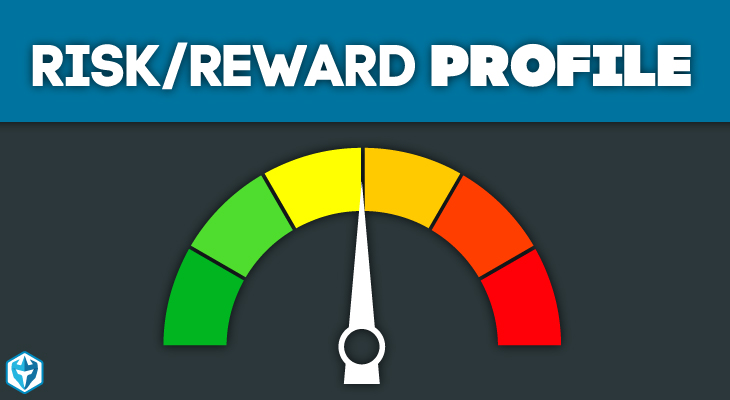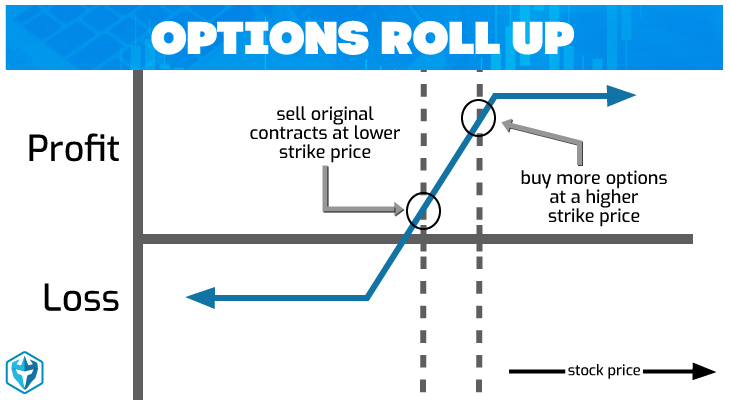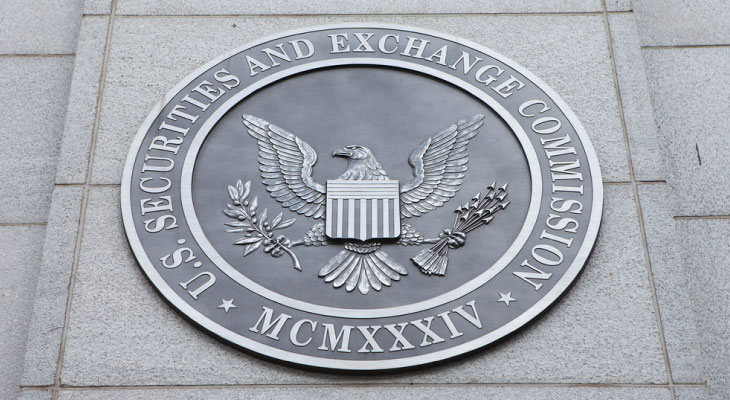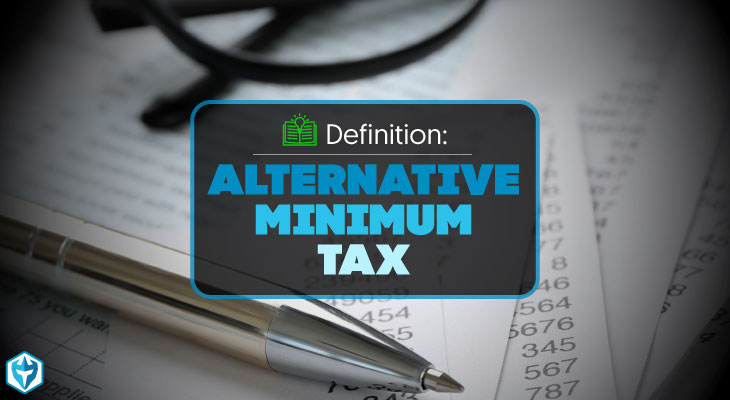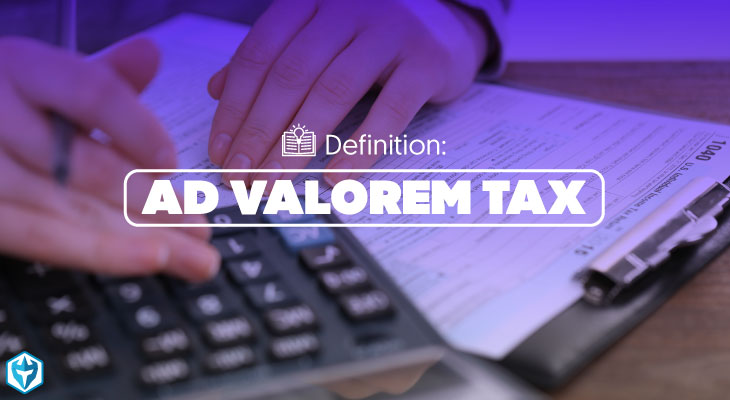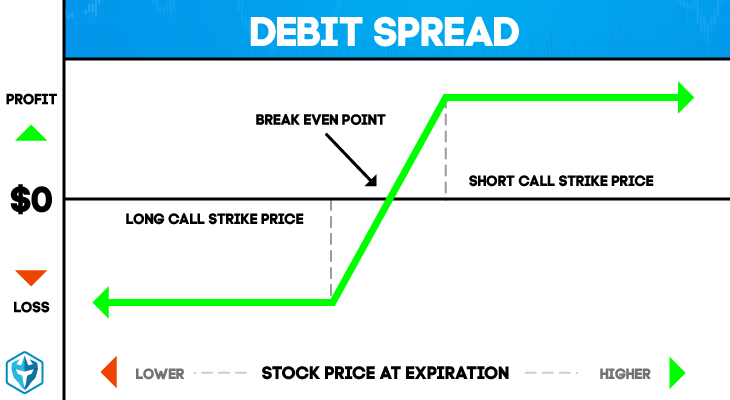Slippage is the difference between the executed and expected price of a trade. It generally occurs during a period of high volatility, as a result of using a market order or when a large order fails to find adequate counter-party interest at the expected trade price.
Both a negative and a positive divergence from the expected price will qualify as slippage, depending on the nature of the executed order. When an order is executed, the corresponding securities are sold or purchased at the most favorable price that is available at the time.
Therefore, it can cause results that are more, equal or less favorable than the original expected outcome, and the results are accordingly referred to as negative slippage, no slippage and positive slippage.
Since market prices are prone to swift changes, slippage will occur during the delay between a trade’s execution and completion.
Slippage as a term is used in both stocks and foreign exchange trading, and while the general concept is the same in both cases, slippage will occur in different situations for the two different trading types.
Slippage In Equity Trading
This happens in equity trading usually occurs when the spread changes. A market order that is placed by a trader gets executed at a price that is less favorable than was originally expected. In the case of long trades, the asking price will have increased.
In the case of short trades, the bidding price will have lowered. Equity traders can increase their protection from slippage by avoiding market orders whenever possible.
Slippage In Foreign Exchange Trading
In foreign exchange trading, slippage occurs when orders are executed, usually without the use of limit orders, or when stop losses occur at a rate that is less favorable than the one originally set in the order.
It is likely to happen when trading volatility is high, which results in orders being impossible to execute at desired prices. In these situations, most foreign exchange dealers will execute the order at the next best price, unless a limit order stops the trade at a preset point.
While limit orders will prevent negative slippage, they carry the resulting risk of a trade not being fully executed at all when the price fails to return to the approved price range.
This risk will increase in a situation where market fluctuations happen more swiftly, which will significantly limit the time that is available for a trade to be completed at an approved price.
Trading Terminology By Warrior Trading
Search our Archives of Trading Terminology
How To Read Level 2 Market Data
Table of Contents What Is Level 2 Trading? What Is the Level 2 Window? How To Use Level 2 To Make Trading Decisions What Are Some Advanced Techniques for Level 2 Data? Routing Orders Dark Pools Time and Sales Data What Are Some Common Mistakes To Avoid? What Are Some Additional Tips for Level 2 […]
What Is a Stop Order? Definition and Types
Table of Contents What Is a Stop Order? Why Use a Stop Order? What Are the Types of Stop Orders? Stop-Loss Orders Buy-Stop Order Sell-Stop Order How Do Stop Orders Work? What Are the Advantages of Using Stop Orders Stop Order vs. Stop Limit Order: What’s the Difference? When to Use a Stop Limit Order […]
What Is a Short Squeeze? [Examples and How To Trade]
Table of contents What Is a Short Squeeze? How Does a Short Squeeze Work? What Triggers a Short Squeeze? What Are Some Real-Life Examples of Short Squeezes? GameStop (GME) AMC Entertainment Volkswagen (2008) How To Trade a Short Squeeze What Are Common Mistakes in Short Squeeze Trading? What Are Some Tips for Success With Short […]
What Is Shorting a Stock [and Why I Don’t Short Stocks]
Updated January 9, 2025 – Written by Ross Cameron Table of Contents What Is Shorting a Stock? How Shorting Works Example Why Do Traders Short Stocks? Real-Life Example Risks and Challenges of Short Selling Unlimited Loss Potential Short Squeeze Margin Requirements Borrowing Costs Why I Don’t Short Stocks Personal Experience Challenges of Switching Biases Why […]
Odd Lot Trade: What Does It Mean For Stocks?
In the stock trading world, a lot refers to the standardized number of units of a stock or security being traded. An odd lot is when a trader buys or sells shares in increments less than a hundred. Often, the actual value of a stock or security means that buying or selling just a […]
How to Use the Negative Volume Index (NVI) Indicator
In the stock market, trading volume refers to the number of shares/contracts of a stock that have changed hands over a given period of time. Volume plays a critical role in technical analysis and is recognized as an indispensable indicator that helps confirm trends and patterns. If the price of a stock with a […]
Year Over Year (YOY): What it is and How it Works
The year over year calculation is a great way to compare how a company is performing on an annualized basis. What is Year Over Year (YOY) Year over- year (YOY) is a method that is often used when making financial comparisons. It can also be described as a mathematical procedure of evaluating a statistic for […]
Current Ratio Definition: Day Trading Terminology
What is the Current Ratio? The current ratio can be termed as the efficiency and liquidity ratio that measures an enterprise’s capacity to pay off its short-term obligations using its current assets. It is a fundamental assessment of liquidity owing to the fact that interim liabilities are due within the following year. Financial liquidity refers […]
Bag Holder Definition: Day Trading Terminology
A bag holder in regards to trading is someone who holds onto a position when it goes against them for an extended period of time causing large losses. This typically happens when a trader enters a position and it goes quickly against them and they freeze like a deer in headlights. When this happens, beginner […]
Private Equity Definition: Day Trading Terminology
Private equity refers to a range of financial firms that restructure companies privately before selling them. While private equity firms may or may not buy and sell public companies, the companies are private entities during the restructuring process. Private Equity, Buyouts and Leverage Private equity firms have developed a somewhat notorious reputation for buying vulnerable […]
Debt Definition: Day Trading Terminology
A debt in financial terms is a legal arrangement that outlines a specific lending and repayment procedure for a given amount of some asset, most often cash. Most debts will carry a fixed or variable interest rate or payment to compensate the lender for the absence of their asset and the counterparty risk from putting […]
U.S. Treasury (T-bills) Definition: Day Trading Terminology
UST is the colloquial trading acronym used for United States Treasury Bills, or ‘T-Bills’. UST are short-term debt securities (less than one year) issued by the federal government to finance their operations and existing obligations, and come in a range of maturities and discount prices sold in denominations of $1,000 each. Discounts Vs Interest UST […]
Allocation Definition: Day Trading Terminology
Allocation in finance is the process where an individual or entity assigns portions of it portfolio across the major asset classes according to its appetite for risk, its investment goals and its relevant time horizons. Since different asset classes have different general performance features, the allocation process can theoretically create quite nuanced and sophisticated portfolios […]
Money Market Definition: Day Trading Terminology
Money market is the term for the various markets where short term debt instruments are traded. Money market instruments have maturity dates ranging from overnight to just under 1 year. Shape of the Money Market The money market is intended for institutional investors that need to make wholesale trades to cover inflows and outflows of […]
Duration Definition: Day Trading Terminology
Duration is a complex measure of a bond’s price sensitivity to interest rate changes. Investors who simply intend to hold a bond until maturity will have little concern for its duration, but investors who may wish to resell the bond before maturity or whose decision-making is affected by their current portfolio value will be interested […]
Credit Default Swap Definition: Day Trading Terminology
A credit swap is the colloquial term for a credit default swap or CDS, which is a credit derivative where the buyer pays a premium to the seller in exchange for the seller’s promise to pay out a given amount to the buyer if the underlying credit instrument fails to meet one or more outlined […]
Municipal Bond Definition: Day Trading Terminology
Muni bonds is the colloquial term for municipal bonds, which are credit instruments offered by cities, states, counties and other government entities smaller than the federal level for use in capital expenditure projects, such as the building of roads, schools and hospitals. Muni bonds stand out for their federal tax exemption, and their exemption from […]
Collateralized Debt Obligation (CDO) Definition: Day Trading Terminology
CDO is the acronym used for a collateralized debt obligation, which is a synthetic investment product made up of a range of income-generating assets that is divided into tranches with different risk profiles and repayment priorities. Breaking Down CDO While CDOs may seem complex at first glance, they are actually reasonably simple to understand, even […]
Intercontinental Exchange (ICE) Definition: Day Trading Terminology
ICE is the acronym used for the Intercontinental Exchange, which is an electronic exchange platform designed originally for the trading of energy related products, but which has expanded to offer trading in other commodities, foreign exchange and interest rate products and equity index futures. ICE is now the parent company of a wide range of […]
Risk/Reward Profile Definition: Day Trading Terminology
A risk/reward profile is the ratio of risk to reward in any given trade as determined by the target closing price and the set stop-loss order. Risk/Reward Profile Example Suppose that a day trader buys 1 share of Company A at $20. The day trader expects the price of the shares to rise to $30 […]
Hidden Seller Definition: Day Trading Terminology
A hidden seller is a seller who is using the capacity to hide sell orders provided by their broker. Hidden sellers can employ 3 separate functions that can help to mask their trade and minimize its impact upon the market. The Purpose of Hidden Sellers Hidden sellers attempt to mask the size and/or origin of […]
Ethereum Definition: Day Trading Terminology
Ethereum is one of the world’s most popular cryptocurrency platforms, with a special focus on creating a universal distributed digital system for transactions. Bitcoin Vs Ethereum Ethereum is often touted as an improvement upon the original cryptocurrency, Bitcoin. However, it is more accurate to say that Ethereum is a 2nd generation cryptocurrency with a special […]
Individual Account Definition: Day Trading Terminology
An individual account is a type of trading account offered by brokers to day traders. Individual accounts are contrasted with a variety of alternative account types. Individual Account Features An individual account with a broker is one where only the named individual has access to the account, a right to trade using the account and […]
Thick Market Definition: Day Trading Terminology
A thick market has a high number of buyers and sellers, which means that there is a high volume of trade and a low level of price volatility. Thick Market Features The high number of buyers and sellers in a thick market means that it has certain resulting features. A thick market tends to have […]
Intraday Definition: Day Trading Terminology
Intraday refers to any market activity that takes place within one day’s trading session. Intraday is most often used with respect to intraday trading, where securities are bought and sold within one trading session. Intraday and Investing The concept of intraday is important in investing because most investors take a long term view based on […]
Liabilities Definition: Day Trading Terminology
A liability is a legal obligation that an organization or individual owes to another organization or individual. In accounting liabilities make up the right side of an organization’s balance sheet, and include loans, mortgages, accounts payable, accrued expenses and deferred revenues. Liabilities in Business Accounting Liabilities and their counterpart assets form the foundation of all […]
Accredited Investor Definition: Day Trading Terminology
An accredited investor is an individual or organization that can deal in unregistered securities or investment products by satisfying one or more criteria that qualify it for exemption from the regulations intended to protect less sophisticated investors. There are five qualifying criteria of an accredited investor. They are net worth, income, professional experience, governance status […]
Market Sentiment Definition: Day Trading Terminology
Market sentiment represents a number of technical indicators that use price action to attempt to gauge the attitude of investors toward a security, sector or market. Market Sentiment in Trading Market sentiment is meant to capture the intangible psychological effects that the feelings and attitudes of investors have on the price action of securities. For […]
Gross Domestic Product (GDP) Definition: Day Trading Terminology
Gross domestic product, or GDP, is the total monetary value of all goods and services produced within a set geographical area, usually a country or state, within a given time period, usually over the span of one year or one quarter. Gross domestic product is composed of consumption, investment, government expenditures and the balance of […]
Scaling In/Out Definition: Day Trading Terminology
Scaling in/out refers to the process of entering (scaling in) or exiting (scaling out) an increasingly favorable trading position. Scaling In/Out Example Suppose that a day trader wishes to buy 100 shares of Company A. He expects the shares to drop around $5 per share over the course of the trading day, but is […]
Acquisition Definition: Day Trading Terminology
An acquisition occurs when one company purchases 50% or more of another company’s shares, thereby making it the dominant shareholder and giving it a controlling stake in the acquired company. Purpose of Acquisitions Acquisitions can be undertaken for a number of different reasons, the main ones being to expand market share, reduce costs, create synergies, […]
Federal Reserve Definition: Day Trading Terminology
The Federal Reserve is the central bank of the United States of America, and is tasked with overseeing monetary policy and regulating the financial system. Purpose of the Federal Reserve The Federal Reserve has 5 main duties: conducting monetary policy, regulating banks, monitoring and protecting consumers’ credit rights, providing financial services to the federal government […]
Emerging Markets Definition: Day Trading Terminology
An emerging market is a national economy that is in the process of becoming an advanced capitalist economy, but whose institutions are not yet fully developed. Contemporary Emerging Markets Depending on the classifying body, there are approximately 20-25 current emerging markets spread around the globe. There are currently 16 national economies that are considered emerging […]
Options Roll Up Definition: Day Trading Terminology
An options roll up is the act of closing a position in an option contract while simultaneously opening a new position in the same option with a higher strike price. The opposite of an options roll up is an options roll down, where the existing position is closed at the same time that a new […]
At the Money Definition: Day Trading Terminology
An option is at the money when its strike price is equal to the underlying security’s current market price. At the Money Example Suppose that an investor purchases a call option for the stock of company A with a strike price of $75. If and when the market price of the shares of company A […]
Box Spread Definition: Day Trading Terminology
A box spread is an options trading strategy that uses a bull call spread and a bear put spread with the same strike prices to profit from arbitrage. When the available options for the box spread are priced favorably, a day trader can achieve a risk-free profit from the use of the box spread options […]
Hanging Man Candlestick Definition: Day Trading Terminology
The hanging man candlestick is a chart pattern used in technical analysis. The hanging man candlestick is used to identify potential downturns in uptrends, as it signals bull exhaustion in fighting a growing bearish sentiment. Hanging Man Candlestick Example The hanging man candlestick gets its name from its appearance as a small body positioned above […]
Yield Curve Definition: Day Trading Terminology
A yield curve is a chart that plots the relationship between maturity and yield for bonds of equal face value and creditworthiness but different maturity dates. Yield Curves in Financial Theory Generally bonds of otherwise equal face value and creditworthiness with later maturity dates will require a higher yield to compensate for the greater uncertainty […]
Hidden Order Definition: Day Trading Terminology
Hidden orders are an order option that some brokerages offer to mask the true size of an order. While not actually ‘hidden’, the brokerage will use various tactics to minimize the potential impact of a hidden order on the market, generally through breaking the order up into smaller pieces and using advanced algorithms to place […]
Order Imbalance Definition: Day Trading Terminology
An order imbalance occurs when there are not enough buy or sell orders on the market to meet the demand for the opposite order type. Order Imbalances in the Market Order imbalances usually occur as a result of the release of important information, which drastically alters the market’s perception of a security and leads […]
Treasury Stock Definition: Day Trading Terminology
What is Treasury stock? A company’s treasury stock is any shares that have been previously issued by the company that are now held by the company itself, usually through share buybacks on the open market or through a structured repurchase scheme. Treasury Stock Example Suppose that a new company creates and publicly issues 1,000 shares […]
Shareholder Definition: Day Trading Terminology
Shareholders, also known as stakeholders, are any individual or institution that holds one or more shares in a company. Shareholders are the owners of the company for which they hold shares, and these shares confer certain rights and privileges to the shareholders, as well as a chance of return on equity. Example of Shareholders Suppose […]
Digital Asset Definition: Day Trading Terminology
A digital asset is any information that is stored digitally and has value. This can include, but is not limited to, videos, software, data and graphics. Issues surrounding the legality of the ownership and use of digital assets have grown exponentially alongside the importance of computing and the Internet. In the financial world, issues with […]
Diversification Definition: Day Trading Terminology
Diversification in finance describes the process where a portfolio of correlated assets is built in such a way that produces a better risk/return profile than would be achievable with only one asset or with a basket of unrelated assets. Diversification in Contemporary Finance The concept of diversification is based on modern portfolio theory, which is […]
Andrews’ Pitchfork Definition: Day Trading Terminology
Andrews’ Pitchfork is a technical indicator that is used to identify support and resistance levels during a medium to long term price trend that is either increasing or decreasing. Traders can use the trend-lines generated by the Andrews’ Pitchfork to make a variety of trades based on resistance and support from the upper and lower […]
Capitulation Definition: Day Trading Terminology
Capitulation is a colloquial market term describing a pattern of strong selling, where powerful psychological and market forces have led to market participants liquidating their positions at any price. Capitulation is usually driven by a combination of fear-induced panic-selling and the forced selling of margin calls. Identifying Capitulation While there is no strict measure […]
Price Rate of Change (ROC) Definition: Day Trading Terminology
Price rate of change, or ROC, is a technical indicator used to signal the momentum of a price’s current trajectory. Price rate of change comes from a class of technical indicators known as momentum oscillators, which are employed in a variety of ways in momentum or trend investing. The formula for calculating the price rate […]
Linear Regression Definition: Day Trading Terminology
Linear regression is a form of statistical analysis that attempts to identify a relationship between an independent variable and one or more dependent variables. Generally linear regression is aimed at causal relationships, where a change in the independent variable causes a predictable change in the dependent variable. Linear regression forms the basis of much of […]
Net Income Definition: Day Trading Terminology
Net income is a company’s earnings after all expenses are paid. Net income is more commonly known as ‘profit’, but ‘net income’ is the proper accounting term and the term that is used on a company’s financial statements. Net Income Example Suppose that a company has revenues of $100, production costs of $50, depreciation costs […]
Fixed Income Definition: Day Trading Terminology
Fixed income describes all the securities that are considered to be debt rather than equity. This means that fixed income securities provide no ownership of the issuing organization, but rather a right to a contracted payment structure for interest and principal payments, as well as collateral in the case of default and priority in the […]
Spinning Top Definition: Day Trading Terminology
A spinning top is a candlestick pattern used in technical analysis that indicates significant indecision on a trading day, and which can be a signal of a trend reversal when it occurs during an uptrend or a downtrend. A spinning top is formed when the real body of the candlestick (the opening and closing prices) […]
Direct Access Routing Definition: Day Trading Terminology
Direct access routing offers traders direct access to the market where the actual trades take place. Direct access routing is contrasted with using an online broker, where the broker acts as the middleman and places the order on behalf of the individual trader, usually bundled together with a number of different orders. Not only […]
Convertible Bonds Definition: Day Trading Terminology
A convertible bond is a hybrid security that acts like a traditional bond until it is converted into equity in the issuing company according to the terms of the bond. Example of Convertible Bonds A company issues a $1,000 10-year bond paying 4% annual interest that can be converted into shares in the company at […]
Insider Trading Definition: Day Trading Terminology
Insider trading is the act of trading a security related to a public company using non-public information, such as information about a company that only employees of that company have access to. Insider trading is generally illegal, as it weakens the overall sense of trust and fairness that underpins the operations of modern capital markets. […]
Junk Bond Definition: Day Trading Terminology
Junk bond is a colloquial investing term for non-investment grade bonds. These bonds carry a rating or BB or less from Standard & Poor’s or Ba and below from Moody’s. Junk bonds typically offer a higher yield as compensation for their higher default risk. Otherwise there is no fundamental difference between a junk bond and […]
Market Index Definition: Day Trading Terminology
A market index is a basket of securities that is intended to represent the value of some specified market or market sector. Investors and financial professionals can then use this representative index to gauge the overall state of that market or market sector. One of the most widely-known examples of a market index is the […]
Futures Definition: Day Trading Terminology
Table of contents Futures in Contemporary Markets The Difference Between Futures and Options Trading Futures Final Thoughts Futures are financial instruments that obligate the seller of the futures contract to sell the underlying asset and the buyer of the futures contract to buy that underlying asset at the contract price and date. Futures specify the […]
Financial Industry Regulatory Authority (FINRA) Definition: Day Trading Terminology
The Financial Industry Regulatory Authority, or FINRA, is the independent regulatory body that oversees all business conducted between investors, brokers and dealers. The Financial Industry Regulatory Authority regulates the major U.S. exchanges and is the highest authority involved in the education and certification of all financial professionals who operate in the securities industry (brokers and […]
Hedging Definition: Day Trading Terminology
Hedging is the act of taking out an opposing position to one or more existing positions that will offset these positions in the event of a loss. A hedging position will almost invariably be smaller than the main position, but a hedge can sometimes make a failed trade profitable if the hedging position was acquired […]
Liquidity Definition: Day Trading Terminology
Liquidity describes the state of the market for an asset in terms of how quickly that asset can be traded without affecting its price. Markets for assets that can be sold quickly with little or no impact on the price of the asset are said to feature high liquidity, while the opposite features in a […]
Alpha Definition: Day Trading Terminology
Alpha is an investing performance measure that tracks the return of a position or portfolio relative to some representative benchmark. For example, the benchmark for a portfolio of U.S. equities may be the S&P 500, and any return above or below that of the S&P 500 for that year would be considered the portfolio’s alpha […]
Common Stock Definition: Day Trading Terminology
A common stock is a security unit that represents a share of ownership in a corporation. The owners of common stock exercise their control over the corporation by electing its board of directors on a pro rata basis. Holders of common stock are the last to receive their share of remaining corporate assets in the […]
Financial Markets Definition: Day Trading Terminology
A financial market is any marketplace where investors trade securities or commodities on an open exchange with transparent orders and transactions. Financial markets generally offer low transaction costs and high trading volumes. Financial markets mainly trade in equities, bonds, commodities, foreign exchange and derivatives, among other financial instruments. A financial market is contrasted with financial […]
Security Definition: Day Trading Terminology
A security is a financial instrument that is both fungible and negotiable. It is a legal contract that represents the rights of ownership of either some portion of a publicly-traded company, some quantity of credit to a business or government body, some quantity of physical good or commodity, or a derivative instrument. Equity and Debt […]
Dragonfly Doji Definition: Day Trading Terminology
The dragonfly doji is a candlestick pattern used in technical analysis to signal a likely positive reversal in a preceding downward trend. A dragonfly doji occurs when the high price, open price and closing price are all the same, generally at the top of a significant downtrend throughout the day’s trading. The return of the […]
Double Top Reversal Trading Guide
The double top reversal is a chart pattern that indicates an upcoming price reversal for a security. The defining feature of the double top reversal is the two peaks with a moderate trough between, the second of which will be followed by a sharp downtrend that reverses all the gains leading into the price peaks, […]
Money Flow Index Definition: Day Trading Terminology
The money flow index, or MFI, is a momentum indicator that measures the flow of money in and out of a security over a specific time period. The money flow index is similar to the relative strength index, or RSI, but it adds the trade volume to the RSI’s price action analysis. Calculating the Money […]
Volume Rate of Change (VROC) Indicator Definition: Day Trading Terminology
What is the volume rate of change? The volume rate of change, or VROC, is a technical indicator used to measure the rate of change in the trade volume of a security. Volume is an important component of virtually every trading strategy based on technical analysis, and is a key indicator for many strategies. Therefore, […]
National Association of Securities Dealers (NASD) Definition: Day Trading Terminology
The National Association of Securities Dealers, or NASD, was the regulatory agency charged with overseeing the operation of the NASDAQ stock exchange and various over-the-counter (OTC) markets. The National Association of Securities Dealers also oversaw the examination and licensing of various investing professionals, such as the series 7 exam. In 2007 the National Association of […]
Stockbroker Definition: Day Trading Terminology
A stockbroker is a licensed financial professional who executes securities trades, primarily equities, on behalf of clients for a fee or a commission. Stockbroker Education While there are no strict educational requirements for stockbrokers, most stockbrokers tend to have at least a bachelor’s degree in finance or business administration. Stockbrokers are expected to have knowledge […]
Out of the Money Definition: Day Trading Terminology
The term out of the money refers to a strike price on a vanilla equity option that is above the current market price for the underlying stock in the case of a call option and below in the case of a put option. Out of the money options have no intrinsic value, as they are […]
Fiduciary Definition: Trading Terminology
A fiduciary is a person or organization that owes a client or customer a duty of trust when dealing with their financials. A fiduciary’s duty to their client is a legal and ethical requirement to act in the best interest of their client when making decisions or offering advice on their behalf. While a fiduciary […]
Modern Portfolio Theory Definition: Day Trading Terminology
Modern portfolio theory is a financial theory that describes how investors can construct a portfolio of assets that maximizes the expected return for any given level of risk or minimizes the level of risk for any given rate of expected return. Modern Portfolio Theory Basics Modern portfolio theory is based on a few foundational ideas […]
Red Herring Definition: Day Trading Terminology
A red herring is a preliminary report associated with an upcoming initial public offering (IPO) that is filed with the SEC. The report contains important details about the business, but does not contain specific details about the IPO itself, such as proposed share price and number of shares for sale. Red Herrings and the IPO […]
Sharpe Ratio Definition: Day Trading Terminology
The Sharpe Ratio is an asset’s average excess rate of return above the risk-free return rate per unit of volatility. The risk-free rate of return is the rate of return on an investment that is considered to be ‘risk-free’, for which the rate of return on U.S. Treasury bills is used. Therefore, any return on […]
Syndicate Definition: Day Trading Terminology
A syndicate is a temporary alliance of financial services firms or businesses that is formed to complete one or more specific financial deals, transactions, or joint business efforts. Syndicates can have various structures of an organization but are primarily either composed of primaries and secondaries, with associated rights and responsibilities, or of equal partners to […]
Financial Advisor Definition: Day Trading Terminology
A financial advisor is any professional who provides products or services to clients concerning investments, taxes, properties and estate planning. Most financial advisors focus on a specific area of advisory services, though some do offer comprehensive services or are members of a firm that provides comprehensive services collectively. Examples of Financial Advisors Some common examples […]
Venture Capital Definition: Day Trading Terminology
Venture capital is a form of financing provided by specialized firms to startup companies and small businesses. While a financial investment is involved in virtually every venture capital deal, many deals also include advisory services provided by the venture capital firm to the company that they are investing in. Venture Capital Investment Theory Venture capital […]
Investment Banker Definition: Day Trading Terminology
An investment banker is a banker who works on large and complicated transactions and financial systems in the investing world. Investment bankers are contrasted with traditional bankers, who are associated with traditional savings and loan banks, and perform more mundane banking duties, such as mortgages and small business loans. Investment Banking Investment banks are at […]
Prospectus Definition: Day Trading Terminology
A prospectus is a formal legal document that provides details about a public investment offering. It is a legal prerequisite for a public investment offering in all advanced modern economies and needs to be filed with the appropriate regulatory body or bodies. Prospectus Types While there are a large variety of prospectus types, they generally […]
Underwriter Definition: Day Trading Terminology
An underwriter is a financial intermediary that takes on some of the risk of another financial actor for a commission, fee, interest payment, spread or some other special privilege. Underwriters are prevalent in a wide variety of financial sectors, primarily insurance, equities, mortgages and credit securities. The Role of the Underwriter Underwriters are essentially the […]
Blockchain Definition: Day Trading Terminology
Blockchain is the technology that underpins the operation of all cryptocurrencies, as well as a variety of other cryptographic processes. Blockchain works as a distributed ledger system that is generated independently by a number of uncoordinated participants, which means that no one individual or organization can tamper with the generation of the distributed ledger. Blockchain […]
Parity Definition: Day Trading Terminology
Parity is a financial term that has a variety of uses, but generally describes situations where two or more objects or individuals are considered equal in some way. Underlying this concept of parity is the idea that one or more different objects are equal or relatable in one or more ways. Parity and Convertible Bonds […]
Book Value Definition: Day Trading Terminology
Book value refers to the accounting value of an asset or company. The book value of an asset is its cost minus any depreciation. The book value of a company is the total value of all its physical assets, which excludes any intangible assets, minus its liabilities. In both cases, the book value is essentially […]
New York Mercantile Exchange (NYMEX) Definition: Day Trading Terminology
The New York Mercantile Exchange, or NYMEX, is the largest exchange for physical commodity futures in the world. The NYMEX has been part of the Chicago Mercantile Exchange Group, or CME, since 2008, and offers global benchmarks for key derivatives areas, including energy, agricultural products and metals. The NYMEX is overseen by the Commodity […]
Wealth Definition: Day Trading Terminology
Wealth is the total assets minus the total liabilities of an individual, organization or government. Wealth is effectively the sum of resources available for disposal at any given time. Wealth is calculated according to current market rates, or appraised estimates when an effective market pricing mechanism does not exist. The Significance of Wealth Wealth is […]
Capital Expenditure (CapEx) Definition: Day Trading Terminology
Capital expenditure, or CapEx, is the money spent by a company on buying, improving and maintaining physical assets, including buildings, machinery and property. CapEx is often a major component of a company’s expansion efforts, though large companies with existing businesses may also have substantial capital expenditures strictly from the maintenance and upgrading of their existing […]
American Stock Exchange (AMEX) Definition: Day Trading Terminology
The American Stock Exchange, or AMEX, is the 3rd biggest exchange by volume in the United States. The AMEX is headquartered in New York City, and currently handles approximately 10% of all the securities traded in America. While the AMEX was originally envisioned as a competitor to the dominant NYSE in American equity trading, it […]
Asset Definition: Day Trading Terminology
An asset is any resource that is considered to have economic value and has a clearly defined legal ownership. An asset can be tangible, such as a factory or precious metal, or intangible, such as a patent or logo. The Making of an Asset The key defining feature of an asset is its exclusive ownership […]
CUSIP Number Definition: Day Trading Terminology
A CUSIP number is the unique registration number given to every publicly traded equity share and bond in the United States and Canada. The CUSIP system is overseen by the Committee on Uniform Securities Identification Procedures. Purpose of the CUSIP System The CUSIP system was created by the American Bankers Association and Standard & Poors […]
Securities Fraud Definition: Day Trading Terminology
Securities fraud is a variety of activities that are considered to undermine the integrity and efficiency of the securities markets. Securities Fraud Enforcement Securities fraud can fall afoul of one or both of civil regulators and criminal enforcement bodies. Civil infractions are generally regulated by the Securities and Exchange Commission, while criminal infractions are enforced […]
Iron Condor Definition: Day Trading Terminology
The Iron Condor is an options trading strategy that relies on low volatility to create a non-directional position with limited risk and limited profits. Establishing an Iron Condor An options trader establishes an Iron Condor position by selling an out of the money put option, buying an out of the money put option with an […]
Option Greeks Definition: Day Trading Terminology
The Greeks are a set of statistical measures used in options trading that are each represented by a letter from the Greek alphabet. Since options are priced based on the projected potential future price action of the underlying security, these statistical measures are essential to understanding the price of options. While many options traders use […]
Compound Interest Definition: Day Trading Terminology
Compound interest is the additional interest payment that is accrued based on the addition of past interest payments onto the original principal amount. Compound interest is considered to be one of the most important features of finance, as even small initial principal amounts can grow exponentially over many compounding periods. Similarly, the contrast between a […]
Churning Definition: Day Trading Terminology
Churning is a regulatory term that describes excessive trading by a broker for a client account that is unnecessary for meeting the client’s investment goals. Brokers accused of churning are assumed to be conducting excessive trading with a client’s account to produce unnecessary commissions. Churning is illegal and the SEC will prosecute suspected cases of […]
Contango Definition: Day Trading Terminology
Contango occurs when the future spot price of a commodity is expected to be below the current spot price and the price of futures contracts are above the expected spot price on their expiration dates. Contango results in an upward sloping futures curve, as the premium for future delivery increases with the expiration date of […]
Securities and Exchange Commission (SEC) Definition: Day Trading Terminology
The Securities and Exchange Commission, or SEC, is the federal regulatory body tasked with overseeing the American securities markets. Role of the Securities and Exchange Commission The Securities and Exchange Commission has a wide variety of roles in the US securities markets, which can be summarized under three official mandates: the protection of investors, the […]
Chinese Wall Definition: Day Trading Terminology
The Chinese wall is made up of the formal and informal barriers within a company that limit the information shared between different divisions that might cause a conflict of interest. Example of a Chinese Wall For example, the wealth management division of a bank will not have access to the content of on-going mergers and […]
Commingling Definition: Day Trading Terminology
Commingling is the act of combining separate assets into one financial entity, of which the asset holders then own a proportional share. The most common example of commingling is in the case of mutual funds, where investors pool their personal resources into one shared fund that trades securities on their behalf according to an agreed-upon […]
CBOE Definition: Day Trading Terminology
The Chicago Board Options Exchange, or CBOE, is the world’s largest exchange for the trading of options contracts. The Chicago Board Options Exchange acts as a clearing house for options on a very large number of companies, indices and exchange-traded funds (ETFs). The CBOE is also the owner of the CFE, which pioneered the volatility […]
Painting the Tape Definition: Day Trading Terminology
Painting the tape is a form of securities fraud where participants create a false appearance of trading activity for a security by buying and selling the security among themselves. Painting the tape can attempt to artificially increase or decrease the price of a security through coordinated trading, or merely give the impression of a high […]
Blue Sky Laws Definition: Day Trading Terminology
Blue sky laws are state laws focused on preventing securities fraud. While blue sky laws vary from state to state, they generally require a high degree of disclosure for any securities traded in the state and for any broker-dealers operating in the state to be registered and regulated. Purpose of Blue Sky Laws Most state […]
Block Trade Definition: Day Trading Terminology
A block trade or block order is a large order usually placed by a hedge fund or large institutional investor. Mechanics of a Block Trade While direct block trades between buyers and sellers do occasionally occur, most block trades take place using a specialist intermediary known as a block house. The block house has traders […]
In The Money Definition: Day Trading Terminology
In the money is a term from options trading used to describe an option that would create value, but not necessarily profit, if exercised. It is not necessarily profitable because a trader needs to account for the premium spent to purchase the option, which being in the money has no bearing on. It just means […]
Ratio Spread Definition: Day Trading Terminology
A ratio spread is an options trading strategy that is used when a trader expects a low level of volatility in a security and their target strike price is unlikely to be exceeded by a significant degree. This expectation allows the trader to sell options with a different strike price to recoup a premium which […]
Delta Neutral Definition: Day Trading Terminology
A position is delta neutral when the change in the value of one or more securities is exactly offset by a corresponding change in the value of the associated derivatives within the position. Traders use delta neutral positions either as a hedge in securities trading or as a strategy to profit from alternate sources of […]
Vertical Spread Definition: Day Trading Terminology
A vertical spread is an options trading strategy that involves the matching sale and purchase of options of the same type and with the same expiry date, but with a different strike price. The idea behind a vertical spread trade is to create a small window of unprofitability, the spread, between two profitable outcomes. Vertical […]
Volatility Skew Definition: Day Trading Terminology
Volatility Skew Definition: Day Trading Terminology Volatility skew is the graphical representation of the implied volatility of a set of options for a security at various strike prices or expiration dates. While implied volatility, which is based on the underlying security, should be the same for all options at the same strike price, in reality the […]
Piercing Pattern Definition: Day Trading Terminology
Piercing Pattern Definition: Day Trading Terminology A piercing pattern is a reversal signal used in technical analysis to identify a potential shift from a downtrend to an uptrend. The pattern involves a large red bar on the first day and a similar-sized green bar on the next day that initially gaps lower yet closes somewhere […]
Harami Candlestick Pattern Definition: Day Trading Terminology
Harami Candlestick Pattern Definition: Day Trading Terminology The Harami candle pattern is a reversal pattern used in technical analysis to predict an upcoming change in price trends. Harami candle patterns can be either bullish or bearish as reversal indicators, since they always involve a large candle on the first day followed by a small opposite […]
Dark Cloud Cover Definition: Day Trading Terminology
A dark cloud cover pattern is a candlestick pattern used in technical analysis to identify the peak of upward price trends, but what does it look like? This pattern typically appears on a stock that has had a recent upward trend with a gap up that is sold off and closes below the previous days […]
Cost of Capital Definition: Day Trading Terminology
Cost of Capital Definition: Day Trading Terminology Cost of capital is a benchmark rate of return that any project must meet or exceed to justify the internal investment in a company. The exact make-up of the cost of capital measure will vary from company to company, but is usually generated as a weighted average cost […]
Central Bank Definition: Day Trading Terminology
Central Bank Definition: Day Trading Terminology A central bank is a modern national institution that oversees some combination of currency management, monetary policy and banking regulation. The exact role and structure of a central bank varies from country to country, but the general purpose of economic and financial management and oversight is the defining characteristic. […]
Dividend Reinvestment Plan (DRIP) Definition: Day Trading Terminology
Dividend Reinvestment Plan (DRIP) Definition: Day Trading Terminology A dividend reinvestment plan, or DRIP, is a broad category of special arrangements for the reinvestment of equity dividends back into the issuing company. Most DRIPs are issued by the relevant company, and contain additional restrictions and benefits beyond owning regular shares. However, many brokers also offer […]
Hyperinflation Definition: Day Trading Terminology
Hyperinflation Definition: Day Trading Terminology Hyperinflation is a loose term describing a sustained period of extremely rapid price inflation in one or more national currencies. It is the product of the mismanagement of a fiat currency and/or national finances that causes a widespread loss of faith in the national currency. The rapidly increasing prices then […]
Mortgage-Backed Security (MBS) Definition: Day Trading Terminology
A mortgage-backed security, or MBS, is any security whose underlying value is based on one or more property mortgage loans. The mortgage-backed security, almost always in the general structure of a bond, is a synthetic financial product that aims to to repackage real estate loans made by banks into something that can be traded more […]
Preferred Stock Definition: Day Trading Terminology
A preferred stock is an ownership stake in a public company, which unlike common stock, has a higher claim on its earnings and assets. Stakeholders of preferred stock can, therefore, benefit by receiving high dividends during the good times when the corporation has made huge profits and decides to distribute the excesses to its shareholders. […]
Extrinsic Value Definition: Day Trading Terminology
Extrinsic value is a term from derivatives trading that measures the difference between the market price of an option and its intrinsic value. Because options are most often priced directly on mathematical models of the underlying stock’s current and historical price (the intrinsic value), the extrinsic value is a measure of the decay in value […]
Fiat Currency Definition: Day Trading Terminology
Fiat currency is any government-backed legal tender that is not backed by a physical commodity. The term comes from the fact that the currency is given value based on the dictate, or ‘fiat’, of a government, and not based on some intrinsic value recognized by those who use it. Most national currencies are based on […]
Elliott Wave Definition: Day Trading Terminology
Elliott Wave Theory is a technical analysis approach that is based on the belief in cycles in the mass psychology of investing. According to Elliott Wave Theory, financial markets follow a familiar pattern of successively smaller 5-3 waves, with the 5 on-trend waves being interspersed with 3 opposite-trend counter-waves. Within each wave of the larger […]
Commodity Definition: Day Trading Terminology
A commodity is a loose term that describes a set of primary goods with shared features. Commodities are usually natural products that are used as first-stage inputs into more complex manufactured goods. Commodities are generally seen as interchangeable within their sub-class and grade. For example, copper is one of the world’s most widely used commodities. […]
Forex Definition: Day Trading Terminology
Forex is the abbreviation for foreign exchange, which is the informal market for currency trading. There are no centralized currency exchange markets, but rather a loose collection of primary and secondary currency dealers that trade in an over-the-counter (OTC) market according to both national rules and international standards and conventions. Anyone can trade in the […]
Revenue Definition: Day Trading Terminology
Revenue is the amount of money earned by a business from the sale of goods and services to individuals and other businesses. It is recorded in the income statement as sales. Revenue can also be earned through the use of capital or assets that are associated with the organization’s main operations before expenses and other […]
Market Breadth Definition: Day Trading Terminology
Market breadth is a concept from technical analysis that uses various comparison measures of advancing and declining company stock prices to gauge overall market sentiment. The degree to which companies are advancing relative to companies that are declining is seen as a measure of current market trends. The Theory of Market Breadth The use of […]
Market Cycle Definition: Day Trading Terminology
A market cycle is any process related to securities that is perceived to operate on a somewhat predictable and repetitive pattern. A market cycle could be related to a specific industrial sector, a subset of stocks or an interrelationship between commodities, among many other possible examples. The most well-known and accepted market cycle is the […]
Dow Theory Definition: Day Trading Terminology
Dow theory is a theory related to the general business cycle that uses Dow Jones compiled averages to interpret the strength of any proposed expansion or contraction of the market. Under this theory, if both the Dow Jones Industrial Average (DJIA) and the Dow Jones Transportation Average (DJTA) are crossing new highs or lows, then […]
Mining Rig Definition: Day Trading Terminology
A mining rig is any computer that is used to process the distributed digital ledger at the core of a cryptocurrency. Some mining rigs are dedicated computers designed to maximize the return on the purchase price and running cost, while other mining rigs are merely used casually or part-time when they are not performing other […]
Cold Storage Definition: Day Trading Terminology
In the cryptocurrency sector, cold storage is the act of storing cryptocurrency ID keys somewhere that is inaccessible through the Internet. Cold storage is intended as a means of protecting the ownership of coins from malicious hacking. An ID Key For Every Cryptocurrency Coin Cryptocurrencies are a digital form of currency, so there is no […]
Proof Of Work Definition: Day Trading Terminology
Proof of work is a cryptographic term describing a system or function that requires work or effort on the part of a user. It is essential to the mining process that drives a cryptocurrency, where the distributed digital ledger at the core of a cryptocurrency is updated by users who are required to perform costly […]
Fork (Cryptocurrency) Definition: Day Trading Terminology
A fork is a cryptocurrency term that refers to a division of one cryptocurrency format into two or more successor cryptocurrency formats, where one of the successor formats may or may not remain the same as the original. Forks in a cryptocurrency occur when there is a disagreement within the largely decentralized governance of a […]
Altcoin Definition: Daytrading Terminology
Altcoin is a colloquial term used in finance to describe any of Bitcoin’s successor and competitor cryptocurrencies. While there is no hard rule for what defines an altcoin, they generally have the same features as Bitcoin (peer-to-peer exchange, mining, etc), while also purporting to improve on one or more of Bitcoin’s suggested shortcomings. Some examples […]
Initial Coin Offering (ICO) Definition: Day Trading Terminology
An initial coin offering (ICO) is a form of business financing based on the creation and distribution of a new cryptocurrency. Initial investors in a new business or venture, almost always related to the cryptocurrency or blockchain sector, are given a new cryptocurrency coin in exchange for their funding. The intended use of these coins […]
American Depository Receipt (ADR) Definition: Day Trading Terminology
An American depository trust or American depository receipt (ADR) is a negotiable certificate that represents a specified number of shares of a stock listed on a foreign exchange that are held by a U.S. financial institution. American depository trusts offer all the benefits of conventional stock ownership, such as dividends and shareholder rights, but with […]
P/E Ratio Definition: Day Trading Terminology
The P/E ratio, or the price to earnings ratio, is one of the simplest and most popular metrics for evaluating stocks. The P/E ratio compares the stock’s current market price with its most recently reported earnings per share. The price of the stock is then evaluated as a multiple of the earnings that each share […]
PEG Ratio Definition: Day Trading Terminology
The PEG ratio, or the price/earnings to growth ratio, is a stock’s price to earnings ratio divided by its earnings growth rate over a defined period of time. The PEG ratio is a metric used by traders to complement or supplement the classic P/E ratio by incorporating a measure of a company’s expected future earnings. […]
Alternative Minimum Tax (AMT) Definition: Day Trading Terminology
The alternative minimum tax, or AMT, is a tax regulation intended to limit the ability of wealthier taxpayers to avoid paying a proportionate share of taxes as a result of their greater opportunity to use tax breaks and exemptions to reduce their tax burden. Calculating Alternative Minimum Tax Calculating the alternative minimum tax is a […]
Amortization Definition: Day Trading Terminology
Amortization is an accounting term that describes the method used for allocating the capital costs of intangible assets over time. It is also often used as a method for creating fixed payments on a loan or bond with a rate of interest so that the payments stay the same for the entire duration of the […]
Bitcoin Cash Definition: Day Trading Terminology
Bitcoin Cash is a cryptocurrency that split from Bitcoin Classic in a ‘fork’ event, where holders of the original Bitcoin were allowed to exchange their units for new Bitcoin Cash units. The split from which Bitcoin Cash emerged was driven by a disagreement among Bitcoin stakeholders about altering the code of Bitcoin to allow it […]
Ad Valorem Tax Definition: Day Trading Terminology
An ad valorem tax is any tax that is based on the assessed value of an asset or set of assets. Ad valorem taxes are a method of periodically taxing assets and properties, as opposed to a transactional tax that only taxes a good or service once at the time of exchange. Ad valorem taxes […]
Basket Trade Definition: Day Trading Terminology
A basket trade is any trade that is performed for a set of 15 or more different shares or other securities, usually as a set proportion of those shares. Basket trades are most commonly used by institutional investors to maintain a proportionate portfolio of different shares or to purposefully alter the proportion of the shares […]
Contrarian Trader Definition: Day Trading Terminology
Contrarian traders base their trading strategies on the underlying principle that the market tends to overreact at both extreme highs and lows. Contrarian traders see these extremes as opportunities to profit from sharp reversals that can occur when the market corrects from a recent overreaction. However, contrarian trading strategies are more complex than simply betting […]
Wash Sale Rule Definition: Day Trading Terminology
The wash sale rule is an IRS taxation regulation governing the use of investment losses in capital gains tax. The wash sale rule prohibits the investor from claiming any sale of a security as a loss if a similar security is purchased within 30 days of the sale. The wash sale rule also applies to […]
Bull Trap: How to Avoid the Fake Bounce
What is a Bull Trap? A bull trap is a trading term that describes a false signal to bulls that the price is going higher, but really is just a fake move before going lower. The increase has to be just enough to lure the bulls in, only for the stock to sink again, […]
Bear Trap Explained For Beginners
Table of contents What is a Bear Trap Example of a Bear Trap How to Avoid a Bear Trap Updated 10/25/2023 What is a Bear Trap? Bear traps most often occur in strongly trending stocks. A bearish catalyst, usually supported by bearish short-term price action, suggests that a trend reversal is imminent, prompting bears to […]
Strangle (Options) Definition: Day Trading Terminology
A strangle is an options trading strategy that uses a put and call on the same underlying security with the same expiration date to bet on a substantial price move in either direction. Strangles are most often used in situations where the trader expects a substantial price move, but is unsure of the direction. Strangles […]
Mark To Market Definition: Day Trading Terminology
Mark to market refers to an investment measure or accounting tool used to record an asset’s value to reflect the market value of the security rather than its book value. The tool is commonly used on futures accounts and helps to ensure that all margin requirements have been completed. When it comes to mutual funds, […]
Thin Market Definition: Day Trading Terminology
A thin market refers to a market characterized by a minimal number of buyers and sellers plus high price volatility. Also referred to as a narrow market, it is also characterized by high bid-ask spreads and low trading volume. This type of market does experience lots of drastic swings thus making it difficult for traders […]
Cash Settled Options Definition: Day Trading Terminology
Cash settled options refer to options that carry the cash settlement feature. As a result, they deliver profits in form of cash and not as a physical asset. The reason why investors choose cash settled options is because they eliminate the high cost of transporting the physical asset and takes the place of indices that […]
European Option Definition: Day Trading Terminology
A European option is an options contract that can only be exercised on the expiry or expiration date. European options are contrasted with American options that can be traded at any time on or before their expiry or maturity date. European Options in Trading Despite the name, the use of European options in trading is […]
American Option Definition: Day Trading Terminology
An American option is an options contract that can be exercised on or before the expiry or maturity date. American options are contrasted with European options that can only be exercised on their expiry or maturity date. American Options in Trading Despite the name, the use of American options in trading is not a matter […]
Calendar Spread Definition: Day Trading Terminology
Calendar spread is an options strategy that allows traders and investors to enter long and short positions simultaneously for the same underlying and strike price but different expiration dates. Option traders can utilize calendar spreads as a way to get into a long position at a cheaper price by selling the other leg and bringing […]
Day Trader Definition: Day Trading Terminology
A day trader is a trader whose time horizon for trades is intraday, often for as little as a few seconds, but generally anywhere from a few minutes to an hour. Day traders attempt to capitalize on significant intraday price movements and volatility by executing multiple quick trades that capture some part of the overall […]
Volatility Crush Definition: Day Trading Terminology
Volatility crush is a term used in options trading to describe the swift reduction in implied volatility of an option after the underlying stock’s earnings are announced or some other major news event. A volatility crush occurs because the implied volatility of options will rise before an earnings announcement when the future price path of […]
Private Placement Definition: Day Trading Terminology
Private placement refers to a method of raising capital where select investors are invited through the offer of equity shares. Unlike an IPO where shares are made available on the open market, a private placement involves select investors like large banks, mutual funds, insurance companies and pension funds. Furthermore, the capital raising event does not […]
Option Class Definition: Day Trading Terminology
An option class is the set of all call or put options for sale for a given security, including every expiration date and strike price combination. Option Class in Trading The option class for any security is used as a broad metric for gauging the relative interest in that security. For example, a high volume […]
Option Series Definition: Day Trading Terminology
Option series refers to a group of options belonging to the same security and characterized by the same price and expiration month. It can also be defined as a set of option contracts that belong to the same class and possess the same expiration date and exercise price. A good example of an option series […]
Put-Call Ratio Definition: Day Trading Terminology
The put-call ratio is the ratio of total trading volume of put options divided by the total trading volume of call options. For example, if the total trading volume of put options was 4 and the total trading volume of call options was 2, then the ratio would be 2. Put-Call Ratio in Trading The […]
Intrinsic Value Definition: Day Trading Terminology
In option trading, intrinsic value (I.V.) refers to the difference between the exercise price (strike price) and the market value of a security. Professor Benjamin Graham from Columbia is credited for having conceptualized the margin of safety concept. This happened in 1934 and resulted in the good professor introducing the idea of calculating the I.V […]
Quadruple Witching and How It Impacts Stocks
What Is Quadruple Witching? Quadruple witching is a market event where several derivatives contracts expire on the same day. The simultaneous expiration of all of these hedging products creates tons of order flow and repositioning, resulting in significant volatility and market whipsaws. It’s called quad witching because these four types of contracts expire on […]
Vega Definition: Day Trading Terminology
Vega or Option Vega refers to the measure of an option’s sensitivity brought by changes in volatility affecting a particular security. As part of the option Greeks, it expresses the changes in an option price brought about by every 1% shift in volatility. As you already know, volatility measures the amount and speed of price […]
Technical Indicator Definition: Day Trading Terminology
A technical indicator is a resource that utilizes technical analysis to study trends and moves of major securities. It can also refer to data points obtained through the application of a formula to a specific security price data. The price data can include open, close, high or low and is usually derived over a specific […]
Fill Price Definition: Day Trading Terminology
Fill price is a term referring to the act of fulfilling an order for a particular financial instrument. As a trading term, it is used to describe the action of transacting financial instruments like stocks, bonds and others. It is important to understand that when an order is complete, savvy traders refer to this process […]
Gamma Definition: Day Trading Terminology
Gamma is one of the major ‘Greeks‘, ancient Greek letters that are used to signify key option trading metrics. An option’s gamma is the derivative of its delta, which itself is a measure of how quickly the option’s price changes relative to the price changes of the underlying security. Therefore, it is a measure […]
Stock Borrowing Definition: Day Trading Terminology
Stock borrowing is the act of receiving a number of shares as a loan from another financial entity. This loan is generally backed up by collateral for the total or partial value of the loaned shares and is accompanied by a rate of interest on the borrowed value. Stock Borrowing in Trading While there are […]
Spread Definition: Day Trading Terminology
Buying a stock is not the same as buying something from the supermarket. Instead stocks are bought and sold according to the bid/ask spread, which is the difference between the highest bid, or the highest price that someone is currently willing to buy at, and the lowest ask, or the lowest price that someone is […]
Scalping Definition: Day Trading Terminology
Scalping involves making a number of very quick trades in order to take advantage of price fluctuations with positions often lasting less than 5 minutes and occasionally counted in seconds. Most scalping strategies use low time frames like the 1 and 5 minutes charts. The idea behind scalping is to take a number of small […]
Call Option Definition: Day Trading Terminology
A call option is a derivative contract that gives the holder the right, but not the obligation, to buy an underlying security at a specified price on or before a specified date. What is a Call Option There are a wide variety of uses for the purchase and sale of call options in contemporary […]
Put Option Definition: Day Trading Terminology
A put option is a derivative contract that gives the holder the right, but not the obligation, to sell an underlying security at a specified price on or before a specified date. What is a Put Option There are a wide variety of uses for the purchase and sale of puts in contemporary trading. […]
Long Sided Trading Definition: Day Trading Terminology
A long position is a trading term that defines the purchase of a security for example stock or option by a trader or investor with the goal of earning profits thanks to the security’s rise in value. Also referred to as long trading, it pertains to the act of an investor buying a position long. […]
Price Averaging Definition: Day Trading Terminology
Price averaging is the act of extending an existing position in a stock by buying or shorting additional shares at a different price than the current entry price of the position, which alters the average price of the position as a whole. For example, suppose that an investor buys 1 share of company A at […]
Buy To Cover Definition: Day Trading Terminology
Buy to cover is an order type made against a stock with the purpose of closing an existing short position. Traders are required to place the buy order with a broker so as to fulfill the requirements of a margin call or to close a position for a profit. Short selling is the process of […]
Pink Sheets Definition: Day Trading Terminology
Pink sheets refer to a daily list of bid/ask quotations for over-the-counter (OTC) stocks compiled by the National Quotation Bureau. Companies that trade on the pink sheets do not need to meet the stringent requirements for trading on a stock exchange, and the trading of pink sheet stocks is much more lightly regulated than trading […]
Russell 2000 Definition: Day Trading Terminology
The Russell 2000 refers to an index that measures the performance of approx. 2000 small cap companies. As a small cap stock market index, it is maintained by the FTSE which is a subsidiary of the London Stock Exchange Group. It is one of the most common benchmark for mutual funds and the most quoted […]
Price Action Definition: Day Trading Terminology
Price action is a broad term meant to indicate any movement, or lack thereof, in the price of a stock that is the product of some technical or fundamental factor, or both, as opposed to merely the product of randomness or ‘noise’. The concept of price action is extremely important to all traders, as everyone […]
Bar Chart Definition: Day Trading Terminology
A bar chart is a graph characterized by a vertical bar and it’s used by technical analysts to learn more about trends. In trading, a single bar is used to represent a single day of trading. As one of the most popular chart type aside from candlesticks, it represents price activity within a given period […]
Net Asset Value (NAV) Definition: Day Trading Terminology
Net asset value, or NAV, is the present value of a share of a mutual fund or exchange traded fund (ETF). The net asset value is calculated by taking the total value of all assets that make up the mutual fund or exchange traded fund, deducting the total value of all liabilities, and then dividing […]
Reversal Definition: Day Trading Terminology
A reversal is any substantial price movement that occurs against the prevailing trend. Of course this makes any reversal very much in the eye of the beholder, without any strict absolute or proportionate requirements for a price movement to be defined as a reversal, but the general principle of a significant movement against a recognized […]
NASDAQ Definition: Day Trading Terminology
NASDAQ or National Association of Securities Dealers Automated Quotations is an electronic marketplace that allows buying and selling of securities. Today, this organization also acts as a benchmark index for US technology securities. As an American Securities exchange, it is considered as the second largest marketplace by market-capitalization meaning it trails behind the NYSE. History […]
NYSE Definition: Day Trading Terminology
As one of the largest marketplace in the world, the NYSE allows traders and investors to purchase corporate stocks and other securities. As a security exchange, it lists 82% of S&P 500, 90% of Dow Jones industrial Average and 70 corporations. It is the biggest equities-based marketplace according to total market capitalization for all listed […]
Line Chart Definition: Day Trading Terminology
A line chart is the most basic type of trading chart created through the connection of a series of data points with unbroken line(s). It is used in trading and finance to display a series of past and present prices for a single stock symbol or more. A line chart is important to traders and […]
Margin Rate Definition: Day Trading Terminology
Margin rate is the interest charged by brokers when traders purchase financial instruments like stock on margin and hold it overnight. It may also refer to a fee charged above and beyond the broker’s call rate. In trading, it is common for a trader purchase shares of stock on margin which means they are borrowing […]
Rights Offering Definition: Day Trading Terminology
A rights offering is an opportunity offered to the shareholders of a company to purchase additional shares typically below the market price and at no cost. In essence, this is a cash call made by the issuer to its existing shareholders thus giving them an opportunity to buy additional shares at a particular share price. […]
Share Buyback Definition: Day Trading Terminology
A share buyback refers to a process where a company initiates the purchase of its shares thus reducing the outstanding shares in the open market. Also referred to as repurchase, it is a program whereby a company purchases its shares from the marketplace since the management has found out that the shares are undervalued. The […]
Inverted Hammer Definition: Day Trading Terminology
An inverted hammer is a technical indicator that is used to identify potential bottoms to downtrends that promise a quick turnaround in the near future. It is the opposite of the widely used hammer indicator, which is employed to identify the top of trends and follows the same basic reasoning. Inverted Hammer Details The inverted […]
CFD Account Definition: Day Trading Terminology
CFD account or Contract for Difference refers to an agreement provided in a futures contract which stipulates how differences in a settlement should be completed that is via cash payments and not through delivery of goods or assets. It is considered as one of the easiest methods of settlement since gains and losses are […]
Pump And Dump Explained For Beginners
Updated January 10, 2025 – Written by Ross Cameron Table of contents What is a Pump and Dump Stock Promoters Chinese Pump and Dumps OTC Pump and Dumps What is a Pump and Dump? A pump and dump takes place when insiders of a company make false and overly promotional statements about the company in […]
Doji Candle Definition: Day Trading Terminology
Doji refers to a candlestick pattern that opens and closes at or near the same price with shares typically moving above and below the opening price to form wicks on either side. The pattern commonly appears at the bottom and at the top of trends. As such, it is used to signify the possibility of […]
Partial Fill Definition: Day Trading Terminology
A partial fill is a trade execution where some but not all of a trade order is filled at the desired price. Partial fills occur when using limit orders, as these orders will only execute when the price is within the defined range, and the price may only enter that range for too low a […]
Hammer Candlestick: Day Trading Terminology
A hammer candlestick is a chart pattern used in technical analysis to identify a potential reversal in a security that has been in a downtrend. The hammer candlestick is generally seen as a short term technical indicator, and is most often used by active traders. Hammer Candlestick Components The hammer candlestick gets its name from […]
Good Till Canceled (GTC) Order: Day Trading Terminology
According to the SEC, a Good Till Cancelled order refers to a buy or sell request designed to last until the order is canceled or executed. The order can be made by an investor looking to purchase or sell a security at a certain price. This type of order has been found to offer an […]
Dollar Cost Averaging Definition: Day Trading Terminology
Dollar Cost Averaging or DCA is a technique used in investment that allows traders and investors to purchase fixed dollar amounts of a specific investment vehicle. In this case, it is common for the trader to purchase a large quantity of shares when the prices are low and lesser shares when the price is higher. […]
Fill Or Kill (FOK) Definition: Day Trading Terminology
A fill or kill, FOK, order is a type of execution order that can be placed with a brokerage for the buying or selling of a security. When the brokerage receives the order, it either executes the order for the entire quantity at the desired price (or less) or it cancels the order completely without […]
LEAPS Definition: Day Trading Terminology
LEAPs are a type of option that stands for Long-term Equity Anticipation Securities. In practice LEAPS are simply vanilla equity options with an expiration date of more than one year. While most equity options are set to expire in 3 months or less, with a smaller market for up to 6 months, LEAPS are an […]
Black Scholes Definition: Day Trading Terminology
Black Scholes model is a price disparity formula used to determine European call options price. Also referred to as Black-Scholes-Merton model, it takes into account that investors have an alternative to investing in securities earning risk free interest rate. Basically, this formula is used to acknowledge that an option cost is a function of stock-price […]
Assignment Definition: Day Trading Terminology
If you are new to options trading, then you probably have a lot of questions. There are many different terms out there and many of them are difficult to understand. One of those terms is an assignment. If you have never heard of the term before and you want to trade options, it’s a good […]
Rho Definition: Day Trading Terminology
Rho is an option Greek that refers to the rate of change which affects the price of a derivative in respect to interest rate changes. As a Greek measure, it is also used to determine the sensitivity of an option. Greeks are important measures of risk management. Not only do they allow money managers, traders […]
Triple Bottom Definition: Day Trading Terminology
The triple bottom pattern a bullish reversal pattern used to predict the bottoming of stock that has been in a downtrend. The pattern can be found on bar charts, line charts and candlestick patterns with a distinct bounce off a support level three times. Looking at the pattern, it is correct to deduce that the […]
Historical Volatility Definition: Day Trading Terminology
If you want to know as much as you can about options trading, it is important that you do your research prior to getting started because there is a lot of invaluable information online. A good place to start would be looking up the definitions of different terms that relate to these types of investment […]
Margin Call Definition: Day Trading Terminology
A margin call occurs when the broker of a margin account demands additional money or securities be added to an account to bring the amount of equity in the account up to its designated maintenance margin. If the account holder fails to add enough cash or securities to the account to bring it up to […]
Triple Top Definition: Day Trading Terminology
The triple top pattern can be described as a bearish reversal pattern used by trading experts and investors to predict a potential reversal from an uptrend. It is usually formed when an underlying asset is experiencing an uptrend but has hit a major resistance level that it test three times only to fail and come […]
Bull Market Definition: Day Trading Terminology
A bull market is an informal, yet widely used, concept that describes the behavior of certain markets or market segments when participants seem particularly exuberant about the future prospect for prices. Bull markets are characterized by steadily rising prices, typically in stocks, the ignoring or downplaying of negative or adverse information and events, the undue […]
Bear Market Definition: Day Trading Terminology
A Bear Market refers to a market where uncertainty and fear overcome positive sentiment which results in continuous selling in the markets over a prolonged period of time. There is no specific guideline to when we enter a bear market but general consensus is a 20% decline in prices across the broader market over a […]
Ex-Dividend Date Definition: Day Trading Terminology
While most of you know what a dividend is, many are unfamiliar with an important date known as the ex-dividend date. Those who have heard the term are often confused about the meaning. Today, we are going to learn what it means and how it can affect you as a trader. What Is an Ex-Dividend […]
Blue Chip Stocks Definition: Day Trading Terminology
Have you ever wondered what a blue chip stock is? Maybe you have invested in the stock market before but never really took the time to learn about these popular stocks? If so, you have come to the right place. Today, we are going to learn what a blue chip stock is and how they […]
Average Directional Index Definition: Day Trading Terminology
The average directional index (ADX) is a technical indicator that is used to signify the strength of a trend. It is a non-directional indicator, so it signals trend strength with no reference to whether it is an increasing or decreasing trend. The ADX is most commonly used alongside directional indicators as a complementary source of […]
Ichimoku Cloud Definition: Day Trading Terminology
The Ichimoku Cloud is among the most versatile technical indicators. It identifies support and resistance levels, gauges momentum, identifies the direction of trends and provides trading signals. With one single glance, traders can identify the trends in securities and examine further signals within that trend. While this indicator might seem complicated, it is actually a […]
Recession Definition: Day Trading Terminology
A recessions refers to the moment when a country’s economy experiences decline as a result of different factors. Recession commonly lasts for 6 months or more and affects the following pillars of an economy – GDP, employment, income, retail sales and manufacturing. It is important to understand that recession is normal but unpleasant and as […]
Capital Gains Tax – Everything You Need to Know
A capital gain is a taxable event that occurs when an asset is sold for more than the purchase price. The important distinction is the act of selling, which separates it from a “paper” gain and is the reason that the increase in value is considered taxable income. An increase in value over the […]
Keltner Channel Definition: Day Trading Terminology
The Keltner Channel is a technical indicator that shows a central line for a moving average and channel lines below and above. This indicator is named for Chester Keltner, who described the indicator in a 1960s book called How To Make Money in Commodities. While the name came from others who heard about the indicator […]
Bond Definition: Day Trading Terminology
Bond Definition: Day Trading Terminology A bond is a debt investment where investors loan funds to a corporate or government for a particular period of time and at a variable or fixed interest. Companies, governments and municipalities use bonds to raise money with the goal of financing projects. Also referred to as fixed income securities, […]
Mutual Fund Definition: Day Trading Terminology
Mutual Fund Definition: Day Trading Terminology A mutual fund an investment vehicle whereby funds are pooled together with the goal of investing into securities like stocks and bonds among others. A mutual fund is overseen by money managers or fund managers working for a money/asset management company. Money managers invest the funds with the goal […]
On Balance Volume Definition: Day Trading Terminology
On Balance Volume (OBV) is a momentum indicator that helps to measure the buying and selling pressure. As a cumulative indicator, On Balance Volume adds volume on up days and subtracts on down days. It utilizes volume flow thus predicting changes in stock price. According to savvy traders, the stock that closes higher than the […]
Bearish Engulfing Pattern: Day Trading Terminology
The Bearish Engulfing pattern is a chart formation where the small green candlestick is engulfed or covered by a big red candlestick. Basically, the pattern is opposite to the Bullish Engulfing pattern where the small red candlestick is eclipsed by a large green candlestick. This chart pattern helps to identify the future occurrence of a […]
Bullish Engulfing Pattern Explained for Beginners
The bullish engulfing pattern is a chart pattern that forms when a new candlestick opens lower and then closes higher than the entire previous candle. A look at the chart pattern will display the tails of the small candle stick as short. This allows the body of the larger candlestick to engulf the smaller black […]
Standard Deviation Definition: Day Trading Terminology
Standard deviation is a statistical measure that represents the rate of divergence from the mean in a data set. The higher the standard deviation, the more the elements of the data set deviate from one another. Standard Deviation Formula It is calculated by first finding the variance, which is the sum of the difference between […]
Joint Account Definition: Day Trading Terminology
A joint account is a type of brokerage account shared between two or more people who include relatives, business partners, and couples. The account is usually opened between individuals who are familiar and trust each other. Each individual co-signed to the joint account has the right to own and manage it. Co-signors of a joint […]
Unicorn Definition: Day Trading Terminology
Generally speaking, a unicorn refers to a start-up company that has attained a $ 1 billion market value as valuated by either a private or public investment firm. According to experts from the Venture Capital industry, a unicorn is a tech start-up company that has yet to establish a performance record but it has been […]
Hard To Borrow List Definition: Day Trading Terminology
The Hard to Borrow List refers to an inventory of securities the brokerage firm is unable to provide for short selling. The inventory provides a current catalog of securities which cannot be shorted by investors or short selling traders. In trading, the reason why a security may be placed on the hard-to-borrow list is because […]
Cryptocurrency Definition: Day Trading Terminology
Cryptocurrency is a digital currency that utilizes cryptography for security and can be sent from one person to another anywhere around the world at very low processing charges. Cryptocurrencies are virtual currencies exchanged between people around the world using cryptography and shared public ledgers thus creating a secure, anonymous and stable monetary system. Cryptocurrencies derive […]
Equity Definition: Day Trading Terminology
Depending with the context, equity has been found to have varying meaning. In finance, equity refers to the ownership of assets after liabilities and debts have been settled. In trading, equity refers to stock or ownership of shares in a public trading company. On the other hand, private equity refers to ownership interest in […]
Return on Investment (ROI) – Day Trading Terminology
Return on investment (ROI) refers to a metric that measures profit or loss generated by an investment in relation to the invested funds and is expressed as a percentage. As the most common profitability metric, it helps to evaluate the performance of a company relative to the invested money. It’s important to understand that profit […]
Roth IRA Account Definition: Day Trading Terminology
A Roth IRA is a retirement account funded by a taxpayer using his or her post tax-income. The plan has several similarities to the traditional IRA. In the traditional IRA, contributions are made with pre-tax dollars which means an individual will pay income-tax when they withdraw the money from the account during retirement. When it […]
Traditional IRA Account Definition: Day Trading Terminology
A Traditional IRA is a retirement account where individuals are allowed to contribute pre-tax income which grows tax-deferred. No dividend-income is deducted by the IRS until the amount is withdrawn by the account holder once they attain the age of 59 ½ years. Traditional-IRA accounts are overseen by select custodians who include retail brokers and […]
401k Account Definition: Day Trading Terminology
This is an employer sponsored retirement plan that is eligible to employees where they can make salary reduction contributions on a pre-tax or post-tax basis. The 401k plan allows employees to save and invest part of the income before taxes are deducted. Employers who offer the plan to their employees can choose to match individual […]
Dark Pool Definition: Day Trading Terminology
This refers to a private forum designed for trade securities where investors have the chance of placing big orders and completing trades without the need of publicly advertising one’s intention. Also referred to as dark pool of liquidity, they are utilized by investors for block trading especially where a large number of financial instruments are […]
Price Target Definition: Day Trading Terminology
This is the projected price of a financial instrument as provided by an analyst and when it’s achieved, the trader is able to attain the best possible outcome from an investment. In other words, it is the price at which a trader or investor exits a trading position finally achieving his or her reward. It […]
Strike Price Definition: Day Trading Terminology
What is a Strike Price? Strike Price is the option price set on a derivative contract. It is often used in index and stock options, where the strike is listed precisely in the contract. Strike price is where security can be purchased during call options. Conversely, it is also the amount at which security can […]
Stochastic Oscillator: Day Trading Terminology
The stochastic oscillator is a momentum indicator that helps to show the current location of a security closing price relative to its high/low range. As a range bound momentum, it’s used for three things: a. Identifying overbought and oversold levels b. Spotting divergences c. Identifying bull or bear signals One thing you need to […]
Volume Profile Definition: Day Trading Terminology
This refers to an advanced charting study used to show trading activity spanning a particular trading and price levels. Also referred to as volume by price, it helps to display the amount of volume occurring at certain price levels and range as opposed to most volume indicators that display volume based on a certain time […]
Channel Pattern Definition: Day Trading Terminology
What is a Channel pattern? It is described as a price movement which utilizes support and resistance to validate what will happen in the future. As a form of trading, it capitalizes on the market tendencies to trend. This is one of the most powerful trading tools that combines different technical analysis indicators finally […]
Head and Shoulder Pattern Trading Guide
What is a Head and Shoulders Pattern? This is a specific formation which helps to predict a bullish to bearish trend reversal. It has three peaks where middle is highest and symbolizes the head while other peaks signify both right and left shoulders. This design has been found to be reliable when it comes […]
Underlying Asset Definition: Day Trading Terminology
Underlying asset is a term that is used in the trading of derivatives, such as options on equities or stocks. Derivatives are financial instruments whose price is based on, or derived from, a separate asset. The underlying asset of a derivative is the financial instrument, such as a stock, a commodity, a futures contract, an […]
Support Level Definition: Day Trading Terminology
What is support level? This is the price level whereby demand of a security is strong enough thus preventing the decline in price. In other words, it is the level at which investors or traders jump in to buy securities while sellers become less inclined to sell their shares. According to savvy investors and traders, […]
Derivative Definition: Day Trading Terminology
Derivatives are securities with prices that are dependent on, or derived from, one or more separate underlying assets. The derivative itself is a contract between two or more participants founded on these underlying assets. Their value is determined by the fluctuation in the price of the underlying assets. The most common types of underlying asset […]
Resistance Level Definition: Day Trading Terminology
What is resistance level? This is the price level at which selling of a security is deemed strong enough to eliminate the increase in price. The resistance level is usually identified on a bar chart and it’s located at the upper levels of range bound markets. It is common knowledge that upward price actions results […]
Option Expiration: Day Trading Terminology
This is the day an option or futures contract expires. In option trading, investors have the ability of purchasing options. When the purchase is complete, the option or futures contract gives investors the right to purchase or sell assets at a pre-determined price within a particular time. This value is called the strike price. […]
Beta Definition: Day Trading Terminology
As a numeric value, it is used to measure the fluctuation of a stock against changes happening in the stock market. Beta is also defined as a systematic risk measure of a security in comparison to the market. The value is commonly used in capital asset pricing model. It helps to determine the expected return […]
Time In Force “TIF” Definition: Day Trading Terminology
Time In Force is the amount of time spent during the execution of an order before it expires. It also refers to a special directive implemented by traders or investors when placing a trade for stocks or other financial instruments. As a result, it gives the trader or investor a mechanism of controlling time for […]
Arbitrage Definition: Day Trading Terminology
This refers to a profit making activity where buying and selling of a security is done on different exchanges or markets. It can also be defined as the practice of buying an asset and selling it immediately at a higher price on a different exchange. According to savvy investors, arbitrage is the practice of leveraging […]
Short Sale Rule “SSR” Definition: Day Trading Terminology
What is a Short Sale Rule? This is an SEC rule where short sales are only executed on an uptick or when someone pays up to your price where your short order is; you can’t hit the bid on a stock with an SSR. According to the SEC, a short sale refers to the sale […]
One Triggers Other Order Definition: Day Trading Terminology
This is a contingent order where by primary and secondary orders are created. When the primary order executes, the secondary order is triggered automatically. This means that the secondary order will become active and follow conditions set for its execution. OTO saves time for the trader since traders can purchase a certain amount of options […]
Parabolic Indicator: Day Trading Terminology
This refers to a technical analysis strategy that utilizes trailing stop and reverse method in order to determine entry and exit points. It is also defined as a price and time analysis measure used to identify points pertaining to stops and reverses. Also referred to as a Stop And Reverse method, it was developed by […]
One Cancels Other Order (OCO): Day Trading Terminology
What is a One Cancels Other Order? This refers to a situation where two orders are made and if one of the orders is executed, the other is cancelled automatically. OCO is known to combine a stop order with a limit order on an automated trading platform and that is why it’s used by seasoned […]
Trailing Stop Definition: Day Trading Terminology
This is a special trade order that disallows the setting of the stop-loss price as a single absolute dollar amount but allows the setting of the value as a percentage usually below the market price. The percentage value helps to track the securities price direction automatically and does not require any manual reset. A trailing […]
Gap And Go Strategy: Day Trading Terminology
For day traders to achieve success in the market, a sound strategy is required. For profits to be realized, discipline is needed. One of the best strategies that has proven to work over time is the Gap and Go strategy. To understand what Gap and Go strategy is all about, you need to understand some of its […]
Volume Definition: Day Trading Terminology
Basically, it refers to the number of shares traded at the market during trading hours. It is also a measure of how much a particular security has been traded within a specific period of time. As a powerful tool, it’s used as an indicator when it comes to trading. In day trading, there are buyers […]
Divergence Definition: Day Trading Terminology
In day trading, divergence is a trading concept that forms on your trading bar chart and results from the price action of a security moving in opposite directions. This happens when the price of an asset or index makes a higher high but the indicator used makes a lower high, usually the MACD indicator. What […]
Freeriding Definition: Day Trading Terminology
To be a successful day trader, skill, discipline and training are among the most important attributes that one has to possess. Every trader has goals they would love to attain. Some of the goals include attaining good returns, minimizing risks and compounding growth. To ensure every trader has a fair leverage when interacting with the […]
Regulation T “Reg T” Definition: Day Trading Terminology
What is Regulation T? This is a collection of protocols formulated by the Federal Reserve Board that governs investors’ margin and cash accounts. When investors purchase securities on borrowed money, it’s referred to as buying on margin. Buying stock on credit exposes investors to huge losses compared to purchasing the same securities with cash. To […]
Electronic Communication Network (ECN) Definition: Day Trading Terminology
What is Electronic Communication Network (ECN)? ECN is a computer system that buys and sells orders for securities. It is an automated electronic system which takes up the role of a third party when it comes to execution of orders. This system is designed to allow trade orders entered by a market maker to execute […]
Gravestone Doji Definition: Day Trading Terminology
The D0ji is an important kind of candlestick pattern, but easily the most infamous kind of Doji is referred to as the Gravestone Doji. By definition this type of candlestick pattern is formed when the opening and closing price trends for underlying assets are essentially equal, but also occur at the daily low end. […]
Leading Indicator Definition: Day Trading Terminology
This refers to measurable factors of economic performance that shifts ahead of the economic cycle before it begins to follow a specific pattern. As a measure of economic performance, it is used to predict shifts in economic activity. What you need to know is that they (leading indicators) are not always accurate. According to financial […]
Lagging Indicator Definition: Day Trading Terminology
This is an economic statistical indicator known to shift after macro economic conditions have shifted too. It also refers to a measurable indicator which has been found to change only after the economy itself has started to shift and follow a particular trend. According to financial experts, lagging indicators are technical factors known to trail […]
Volatility Definition: Day Trading Terminology
Volatility is a measure of the security’s stability and is usually calculated as the standard deviation derived from a continuously compounded return over a certain period of time. It can also be defined as a statistical measure of dispersion for particular securities and is measured by variance or standard deviation. When it comes to option pricing, […]
Market Trend Definition: Day Trading Terminology
A market trend represents the general direction in a market or a security. Trends can also be applied to interest rates, yields or any other market that features long-term movements in volume and price. The length of market trends can vary between short-term, intermediate and long-term. In general it is better to trade with a […]
Fibonacci Retracements Explained for Beginners
If you are an active trader you might have noticed that financial asset prices follow certain patterns. A pattern that consistently occurs is consolidation between price ranges. Financial assets will often trade in a tight range, consolidating a recent move, and then move to another range and repeat the process. Even during market trends […]
Merger Definition: Day Trading Terminology
Merger are deals that unite two separate companies into a single new company. There are a number of different types of mergers, and a number of different reasons for companies to go through one. The most common type is the uniting of two completely separate companies into a single new company with a new name. […]
Crossed Market Definition: Day Trading Terminology
A crossed market refers to a temporary situation where bid prices associated with a particular asset or security is higher than the asking price. Also referred to as backwardation, it is the futures market relationship where the prices are lower than the spot prices. A crossed market is a temporary situation that presents an arbitrage […]
Cup and Handle Trading Guide
The cup and handle pattern is a continuation chart pattern that looks like cup and handle with a defined resistance level at the top of the cup. It forms from a strong drive up that pulled back and consolidated over a period of time creating the cup before making another push to the […]
Stop-Limit Order Explained
What is a Stop-Limit Order? A stop-limit order is an order type that combines the features of a stop and a limit order with the idea to reduce slippage risk. To successfully execute this order type, two price points must be determined: a stop price and a limit price. The stop price will trigger the […]
Shares Outstanding Definition: Day Trading Terminology
The term “shares outstanding” refers to the stock of a company that is currently held by all shareholders, which includes restricted shares owned by company insiders and share blocks owned by institutional investors. The outstanding shares of a company are shown on its balance sheet under the Capital Stock heading. The number of shares that […]
Secondary Offering Definition: Day Trading Terminology
As an entrepreneur, it is common to seek private funding when you want to start a business. These calls for meetings with angel investors and venture capital firms where you will get to present your idea and if they like it, they will fund you in exchange for a percentage in your company. Once you […]
Earnings Per Share (EPS) Definition: Day Trading Terminology
Earnings Per Share (EPS) can be defined as a portion of a company’s profit allocated to a person’s share of the stock. It is also the market prospect ratio used to measure the net income earned per share of stock outstanding and helps to show how profitable a company has become especially on the shareholder’s […]
Open Interest Definition: Day Trading Terminology
The open interest for an option is the total number of outstanding or open, not delivered or closed, options or futures contracts that are in effect on any given day, to be delivered at a particular date. It is most often associated with the options and futures markets, where the existing number of contracts will change […]
Profit/Loss Ratio Definition: Day Trading Terminology
A profit/loss ratio is a measure of the ability of a particular trading system to generate profit instead of loss. A system’s profit/loss ratio is calculated by taking the average profit from all winning trades divided by the average losses on all losing trades over an arbitrary period of time. Many novice investors appreciate the […]
Dead Cat Bounce Definition: Day Trading Terminology
In trading, dead cat bounce refers to a temporary recovery that happens after a long decline which is usually followed by a downtrend. It can be defined as the chart phenomenon that happens during bearish moves. Basically, it is a long awaited correction from a brutal bearish trend. As a market jargon, it is a […]
Exchange Traded Fund (ETF) Definition
An exchange traded fund, or ETF, is a marketable security tracking bonds, commodities or other baskets of assets, such as an index fund. Unlike a mutual fund, ETFs trade just like the shares of an equity stock on stock exchanges. An Exchange Traded Funds will undergo price changes over time as they are traded on […]
Butterfly Spread Definition: Day Trading Terminology
When it comes to profiting from stock movement, there are different strategies which can be used thanks to their ability in combining buy and sell call and put options. This can happen at different strike prices and expiration dates. One common strategy is known as a butterfly spread. In day trading, a call refers […]
Collar Strategy Definition: Day Trading Terminology
Collars are protective strategies involving options that are used after a long position in a security has already achieved a significant increase. Investors use the collar strategy through the purchase of out-of-the-money put options and the selling of out-of-the-money call options. This techniques is also known as hedge-wrapping. In general investing terms a collar is […]
Aroon Indicator Definition: Day Trading Terminology
The whole point of investing is to find an investment trading at a price that is either too high or too low from where it should be. One who can capitalize on this can start to make a lot of money for themselves. The trouble is trying to determine when a price is out of […]
Death Cross Definition & Trading Guide
Perhaps one of the scariest sounding terms on Wall Street is the “death cross”. That combines two words that you never want to hear in your everyday life, but they have a particular meaning on Wall Street. If you play it a certain way you may even be able to profit from it. The […]
Straddle Definition: Day Trading Terminology
When it comes to trading, numerous strategies can be used with the aim of financial success. They (strategies) are designed to achieve profitable returns by either going long or short in the markets. For a strategy to be termed as good, it should be verifiable, consistent and objective. What is a straddle? This refers […]
Long Straddle Definition: Day Trading Terminology
The long straddle is a strategy for the trading of options where the trader purchases both a long put and a long call for the same security, strike price and expiration date. The strike prices are usually in the money or close to the current market price for the underlying asset. The long straddle is […]
Golden Cross Definition: Day Trading Terminology
A Golden Cross is an indicator for bullish breakout patterns that are formed when an asset’s short-term moving average (STMA), such as the 50-day, crosses over its long-term moving average (LTMA), such as the 200-day. These crossings signify breaks above key levels of resistance. Since the LTMA indicator is more influential, golden crosses are […]
OTC Market Definition: Day Trading Terminology
The OTC markets, short for Over The Counter, allows for the trading of assets without the formal structure of an official exchange. This means that the trades are made in private between clients and dealers, or intra-dealer trades, without the price or terms of the trade being made public. This arrangement is in stark contrast […]
Credit Spread Definition: Day Trading Terminology
A credit spread involves simultaneously selling and purchasing an option on the same underlined futures contract but at different strike prices. The option that you sell is going to be at a higher level or closer to money than the option you purchase, resulting in a net credit for the trade. Options that are closer […]
Protective Put Definition: Day Trading Terminology
If the idea of investing your hard-earned dollars into potentially risky, but then again, potentially profitable investment options, there may be a solution that will help to put your mind at ease. A commonly used risk-management strategy for investors who are a little unsure about whether or not their investment will definitely be a profitable […]
Covered Call Definition: Day Trading Terminology
For the investor who wants to minimize the risks involved with trading stocks, a covered call is a type of options strategies that can actually be profitable and hedge your long position at the same time. In order to use a covered call option, an investor would need to be the owner of the […]
Swing Trading Definition: Day Trading Terminology
Tune in to any stock market news broadcast and you are bound to hear about the momentum of the market in one direction or the other. Newscasters are always talking about “which way the market is heading” and similar topics. As an observer you might wonder what it is that they are getting at exactly […]
Implied Volatility Definition: Day Trading Terminology
Options are a way for investors to get involved with the markets even if they do not have that many funds to get started. Many investors are hesitant to get involved with options because they seem too complicated. However, with just a little education on these it becomes a lot more clear. There are benefits […]
Debit Spread Definition: Day Trading Terminology
A debit spread is an options strategy that seeks to maintain maximum profit. It achieves this by capitalizing on the difference from the premium paid for long component of the spread less the premium paid for short component of the spread. It involves two options – call or puts. One option has a lower […]
Delta Definition: Day Trading Terminology
Delta is a simple measure used in derivatives trading to indicate the relation between the price of an option and the price of its underlying security. The delta of an option is the discount factor that will directly translate the price change in a security into the price change of that option. The delta […]
Option Theta Definition: Day Trading Terminology
The simplest way to describe theta in options trading is that it is the daily decay of the extrinsic value of an an option. However, the metric is based on the assumption that the price and volatility of the underlying security will be constant over that period of time, which is never the case. […]
Relative Strength Index (RSI) Definition: Day Trading Terminology
If there is something that counts in binary trading, it has to be the Relative Strength Index. This essential aspect can help you become a successful trader if you understand how to analyze the markets with this significant identifier between overbought and oversold conditions in asset trading. What is the Relative Strength Index? […]
Dividend Definition: Day Trading Terminology
Investing terms are important to understand if you want to get involved in the markets. A full understanding of them will help you make better choices when it comes to how you are investing your hard earned funds. One of the terms that you should know is something called a “dividend”. What Is A Dividend? […]
Oscillator Definition: Day Trading Terminology
An oscillator is a technical indicator that is used to help determine over bought/sold conditions or to confirm the strength of a trend. Oscillators use a scale between 1 and 100 that smooths out prices using price averages over a give time frame. Oscillators are usually used in conjunction with other technical indicators to help […]
Opening Range Breakout Trading Strategy
In markets, all times of day are not created equal. We know the open and close are important, but why? Most of us have a vague idea why, and may have heard a few quotes about the open, but do we really know why the open is so important? The open often establishes the trend […]
Stock Split Definition: Day Trading Terminology
A stock split a corporate action that happens when a company decides their stock price is either too high (forward split) or too low (reverse split). Companies do this to help reduce the cost of a stock so more people can invest in it or if it is too cheap it raises the price to meet […]
Fundamental Analysis Definition: Day Trading Terminology
Fundamental Analysis is a way to evaluate the value of a company based on key financial metrics to find it’s intrinsic value as way to see if it is overvalued or undervalued. This method is more suitable for investors who are not concerned with the day-to-day price action of the stock and are rather focusing their […]
Tick Index Definition: Day Trading Terminology
The tick index is an important indicator used for determining overbought and oversold conditions for active traders. It is calculated by taking all the stocks on NYSE that have had an uptick minus all the stocks that had a down tick and then the result is displayed on a chart based on your preferred time […]
Short Interest Definition: Day Trading Terminology
Short interest is a term that shows how many shares are short compared to the float and can also be displayed as a percentage called the short percent of float. It is important to understand and know when trading a stock because it can play a huge role in how much a stock can move. It […]
Order Routing Definition: Day Trading Terminology
With the advent of Direct Market Access (DMA) there are now ways for traders to gain access directly to market makers and ECNs and bypass gateways from standard brokers that take more time for you to get an execution. There are a ton of different order routes to choose from but we have found ARCA and […]
It’s the #1 Trading Indicator: VWAP – Volume Weighted Average Price
Table of contents What is VWAP Why is VWAP Popular? VWAP Video Lesson My VWAP Breakout Trading Strategy My VWAP Pullback Trading Strategy FAQ’s Updated: November 1, 2023. Written by Ross Cameron What is the Volume Weighted Average Price (VWAP) Indicator? The volume-weighted average price (VWAP) is a popular technical indicator that measures the average […]
Technical Analysis Definitive Guide
Table of contents Why Traders Need Technical Analysis Technical Analysis: Bottom Up vs. Top Down Approach Key Technical Analysis Concepts Support and Resistance Bottom Line Technical analysis is a loaded term. The phrase means different things to different people. If you ask a green pea newbie, they’ll tell you that with the right knowledge […]
Market Capitalization Definition: Day Trading Terminology
Market Capitalization, better known as Market Cap, is a measurement used to classify a company’s size, which can be categorized between small, medium or large cap with sub-categories from there. It is a simple calculation that takes the stock price and multiplies it by the number of outstanding shares. Understanding what the market cap is […]
Moving Average Convergence Divergence (MACD) Explained
The moving average convergence divergence, better known as MACD, is a technical indicator that is used for measuring the strength of a trend by using two moving average prices. It is calculated by subtracting the 26-day exponential moving average (EMA), known as the slow length, from the the 12-day EMA, known as the fast […]
After Hours Trading: Day Trading Terminology
What is After Hours Trading Most traders trade during normal trading hours, which is 9:30am EST to 4:00pm EST for US markets, however, trading does occur outside these hours in the after hours trading session. After hours trading is trading that occurs after the market closes at 4:00pm EST and can run to as late as […]
Binary Option Definition: Day Trading Terminology
Over recent years traders have started hearing about a new trading product, but there are many questions and concerns about what they are and how they work. Binary Options are a type of derivative that are considered an “all-or-nothing” asset and is comparable to placing a bet on a sports game. When you purchase a Binary […]
Proprietary Trading Definition: Day Trading Terminology
Proprietary trading occurs when a company risks their own capital to trade stocks, currencies, commodities or other financial instruments for financial gain. This is different than hedge funds or investment firms that trade on behalf of their clients and make money through commission, profit sharing and fees. Most proprietary trading occurs at big banks and […]
Penny Stock Definition: Day Trading Terminology
According to the SEC, penny stocks are considered to be any stock trading below $5 per share whether they are listed on an exchange or trading through the Over The Counter Bulletin Board (OTCBB) or pink sheet markets. Penny stocks, often referred to as microcap or even nanocap stocks, are usually smaller or newer companies with […]
Floor Trader Pivots Definition: Day Trading Terminology
Floor trader pivots are one of the more popular pivot levels for active traders and are commonly used by floor traders in the trading pits. The pivot points are calculated by using the previous days high, low and closing prices for establishing key intraday resistance and support levels. There are tons of pivot calculators that can […]
Gap Definition: Day Trading Terminology
Gaps form on charts when there is a big price movement with no trading in between. This usually happens over night when news comes in and pushes the prices of a stock higher or lower than the previous days close. This is caused by a major difference in supply or demand usually caused by a […]
Dow Jones Industrial Average – DJIA: Day Trading Terminology
The Dow Jones Industrial Average, also referred to as the DJIA or more commonly the Dow Jones, is a price-average index of 30 different stocks that trade on the New York Stock Exchange and on the NASDAQ. It contains mostly blue-chip companies from the stock market that have a large market cap. The Dow Jones […]
Initial Public Offering (IPO) Definition: Day Trading Terminology
An Initial Public Offering, more commonly know as an IPO, is a term used for when a private company issues shares for the first time to the public. Generally companies that are completing an IPO are seeking capital to fund growth initiatives and in return, investors will receive equity in the company with hopes of […]
Margin Account Definition: Day Trading Terminology
Margin Account is a type of brokerage account that allows you to buy stock on margin by borrowing money through your broker. Generally there is an application process that has to be approved by the broker to ensure you are eligible for a margin account. For margin accounts, there is an account minimum of $2,000 […]
High Frequency Trading Definition: Day Trading Terminology
High Frequency Trading (HFT) is when a trader or institutions utilizes technology and powerful computers to automate trading and execute large orders at very high speeds through the use of algorithms. Their super computers are able to scan the stock market in seconds looking for ideal trading scenarios which gives them a big advantage over retail […]
Cash Account Definition: Day Trading Terminology
When opening a brokerage account you have the option to open different types of accounts depending on what you are looking to do. You can open a joint account, individual account, cash account, margin account and many others but the one we are going to talk about today is the cash account. It’s a simple […]
Stock Market Definition: Day Trading Terminology
The Stock Market, also known as the equity market, is an auction-based market where shares of public companies trade through exchanges between market participants. It gives public companies the chance to access additional capital by allowing investors to buy shares in return for ownership of the company based on the amount of shares the investor […]
Alligator Indicator Definition: Day Trading Terminology
The alligator indicator was first introduced by Bill Williams in the 1990s with the idea that markets trend a small portion of the time while remaining in a sideways range for most of the time. The indicator was developed to give simple buy and sell signals by using three simple moving averages set at five, […]
Option Chain Definition: Day Trading Terminology
Option chains are used for quoting options via a list of the available strike prices and expiration’s for the underlying security. In the example below we have an Apple ($AAPL) option chain for the January 20, 2017 expiration. On the left side are all of the option calls, in the center is the strike […]
Buying Power Definition: Day Trading Terminology
So you just opened your new trading account and the first thing you see when you sign in is your buying power, but what is buying power? When traders talk about buying power they are talking about how much is available to purchase/short stocks in their account. This can differ depending on what type of […]
Day Trade Explained For Beginners
When a day trader places a trade they are looking to capitalize on a stocks price movement on the same day they place the trade and are not looking to hold a trade overnight. This is called day trading. So for instance, if a trader buys shares of Facebook ($FB) on Monday, they would have […]
Limit Order Definition: Day Trading Terminology
When you place an order to trade a stock there a couple of different types of orders you can use and knowing how they work will help you understand where and when to use them. What is a limit order? A limit order is an order type that tells market centers that you want to […]
Market Order Definition: Day Trading Terminology
When placing orders to trade stocks you can place a couple different types of orders but the one I want to talk about now is called market orders. When you place a market order you are saying that you will buy or sell at whatever price the market price is when you submit your order. […]
Time And Sales Definition: Day Trading Terminology
Time and sales (AKA the tape) is a tool that shows every trade that has been executed along with the size and time for that trade. In the image below you will see that there are green and red prints along with white prints, time of trade and the size on the right. The […]
Average True Range Definition
The Average True Range is a trading term used to the measure the volatility of a stock or index. It’s a technical indicator that tells us the average price range a stock typically trades in and was first introduced by Welles Wilder. It calculates the average price range over a given period time, usually for […]
Market Maker Explained For Beginners
A market maker is a broker-dealer who has been certified, and/or has met capital requirements, to facilitate transactions in a particular security between the buyer and sellers. They typically hold a lot of inventory of shares in that security so they can fulfill large amounts of orders in a moments notice. How Market Makers […]
Level 1 Quotes Explained For Beginners
What are Level 1 Quotes? Level 1 quotes are a type of quote for a stock that provides three basic data points: The last price traded The current highest bid price The current lowest ask/offer price They’re called “level 1” quotes because there’s three levels of quotes in the US stock market. Level 1, […]
Candlestick Patterns Definition: Day Trading Terminology
Candlesticks are used for charting price action by displaying the high, low, open and close prices for the time period specified. Depending if the candlestick closes higher or lower from the opening price, it will have a different color, usually either red or green where red marks a down candle and a green marks a […]
Pennant & Flag Pattern Comparison
Of all the patterns created by price action, the flag and pennant pattern are some of the easiest to recognize as well as trade. They provide excellent entry and exit points with defined risk and reward scenarios. Below we’ll compare their differences in both appearance and trading tactics. Flag Pattern A popular trading pattern for […]
Option Definition: Day Trading Terminology
Options are a financial derivative that trade based on the price action of the underlying asset and are bought and sold in units called contracts, which usually represent 100 shares per contract of the underlying. Options come in two different types: calls and puts. Traders can choose to buy (option holder) a call/put long or sell […]
Stock Definition: Day Trading Terminology
The stock market has become more popular than ever but what exactly is a stock and how do they work? What is a Stock? When you buy stock, you are actually buying a small portion of the company and becoming a partial owner or shareholder. This means you have a claim on the company’s […]
Ask Price Definition: Day Trading Terminology
The ask price (also known as the offer) represents the lowest price a seller is willing to sell their shares for. The bid price is what represents all the buyers. In the above Level 2 of the QQQ’s you will notice that the ask is on the right hand side and is currently sitting at […]
Bid Price Definition: Day Trading Terminology
The bid price represents what buyers are willing to pay for that particular security and the bid size represents how much a trader is willing to buy at that specific price. Above is an example of a Level 2 for the SPY and as you can see the bid price is currently at $224.68 with the […]
Exponential Moving Average Explained for Beginners
An exponential moving average (EMA) is an average price calculation over a specific time period that puts more weight on the most recent price data causing it to react faster to price change. Traders use moving averages on charts to help determine trend, direction, and strength, and are often used as entry and exit […]
Simple Moving Average Definition: Day Trading Terminology
The Simple Moving Average (SMA) is a popular moving average that takes an average price calculation over a specific time period. Intro Moving averages (MA) are popular among technical analysts, investors and day traders around the globe. MAs collect the closing price of a given stock for a specified period of time, normally over a […]
Short Selling Definition: Day Trading Terminology
Traders who are short selling a stock are selling shares and creating a negative share balance in their account. This means that when they are holding a short, their position will show them holding -1,000 shares. As soon as they sell the shares, they are bringing in money from the sale. But they must buy […]
Stock Float Definition: Day Trading Terminology
Every stock has a float, which is the number of outstanding shares available to trade in a stock minus the restricted shares or shares held by insiders and employees. More simply, it is the number of shares that are free to trade in the open market. Restricted shares are shares that are held by […]





![What Is a Short Squeeze? [Examples and How To Trade]](https://media.warriortrading.com/2021/06/22195652/article-short-squeeze-1.jpg)
![What Is Shorting a Stock [and Why I Don’t Short Stocks]](https://media.warriortrading.com/2022/02/09103646/why_i_don_t_short_stocks-1024x576.jpeg)















